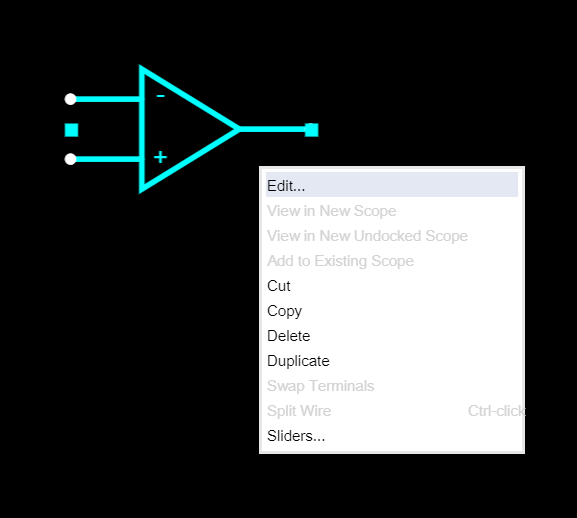Terminology
Current sinking & sourcing
Current sinking
The ability of an electronic device or port to receive current. When a device is sinking current, it is acting as a load and drawing current from a power supply.

Current sourcing
The ability of an electronic device or port to deliver current to a load.

- Notice the current direction.
- Notice the resistor examplifies as a load.
Impedance
DC impedance
In a DC circuit, impedance is simply the total resistance of the circuit.

- Notice the current flow in the simulation.
- Notice the current-meter. In this example the total resistance = 5V / 1.419 mA = 3.5 kΩ
- In a complex circuit you get a network of many different resistances. We don't talk then of resistance but of impedance.
AC impedance
In an AC circuit, the impedance of a circuit depends on the frequency of the AC signal. This is because inductive and capacitive reactance both increase with frequency.
Coupling
DC / AC coupling
- AC coupling allows alternating current (AC) signals to pass through, while blocking direct current (DC) signals.
- DC coupling allows both AC and DC signals to pass through.

- Notice I gave the input signal an offset.
- Notice the DC coupled path keeps the DC offset. This is more useful for CV signals.
- Notice the AC coupled path removes the DC offset. This is more useful for audio signals. Voltages that center around 0V are easier to amplify or attenuate since you only multiply the main signal and not also the offset.
Power rails
Power rails
Simply said: the power supply to a part. We often use the term power rails when we speak of op-amps.

- Notice I drew the power lines more as "rails". Hence the name.
- Notice the single supply op-amp. This version has one power rail to +V and the other to ground reference.
- Notice the dual supply op-amp. This version has one power rail to +V and the other to -V.
Falstad op-amp
In examples above I used the "real op-amp" from Falstad. In practive the "ideal op-amps" in Falstad work much better and give a less messy look, since their power supply is hidden. Please be aware that you can edit the power rails via: right-click op-amp-> drop-down menu. -> edit.

Arduino / MCU
I have the habit of calling every "microcontroller" an Arduino, because beginners know often Arduino's but not the term MCU. So I use it as an collective name for all small development boards and programmable chips etc. MCU means "microcontroller unit" by the way.